Don't wanna be here? Send us removal request.
Text



Forest Fairies 🌴
This was one of my personal favorite pieces I made for my solo exhibition at Gallery Nucleus in 2023 🥰 This and a few more originals are available through their website ✨
7K notes
·
View notes
Photo
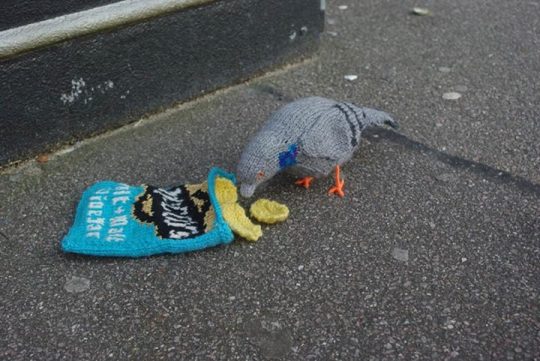
Little knitted pigeon enjoying some crisps on the pavement…
*Courtesy of Clare Sams www.claresams.co.uk
Find him at The Minories Art Gallery, in Colchester: http://tmblr.co/ZLKKup15_Ys0C
1M notes
·
View notes
Text
Good Bard quote
I agree that promoting good practices in politics is not an easy task. It requires concerted effort, sustained commitment, and a willingness to challenge the status quo. However, the rewards of such efforts are immense. A society that embraces critical thinking, respects diverse perspectives, and engages in constructive dialogue is more likely to find common ground, resolve conflicts peacefully, and make informed decisions that benefit all citizens. While it may seem daunting, we must not shy away from the challenges. By engaging in open discussions, challenging our own assumptions, and seeking understanding with those who hold different views, we can begin to bridge the divides that have plagued our society for far too long. Together, we can create a more just, equitable, and prosperous society where the voices of all are heard and valued.
0 notes
Text
A Conversation with Google Bard
Bard and I were discussing the nuances of civics and politics and the nature of constitutional documents, and interpretation came up. I found this interesting.
In essence, constitutions are both living documents and constantly evolving. They are subject to interpretation and reinterpretation as society changes, and they can be amended or even rewritten to reflect the changing values and aspirations of the people. This adaptability is what allows constitutions to remain relevant and effective in guiding a nation through the challenges and transformations of the future.
Focusing on your last paragraph there, are you saying you disagree with Constitutional originalism?
My statement about the adaptability of constitutions being crucial for their effectiveness might raise questions about my stance on originalism. To clarify, my intention was to emphasize the dynamic nature of constitutions and their need to adapt to changing societal values and needs. This does not necessarily imply a complete rejection of originalism. In fact, originalism can play a valuable role in constitutional interpretation by providing a historical anchor for understanding the intent and meaning of the constitutional text. However, in my view, it should not be applied in a rigid or inflexible manner. Rigid adherence to the original understanding of the constitution, without considering the evolution of society and changing circumstances, can lead to interpretations that are outdated and out of touch with contemporary realities. Therefore, I believe in a more nuanced approach to constitutional interpretation. While originalism should be considered alongside other interpretative methods, it should not be the sole determinant of constitutional meaning. The evolving nature of society and the need to uphold fundamental principles of justice and equality should also be given due weight in interpreting the constitution and applying it to contemporary issues. Ultimately, the goal of constitutional interpretation should be to strike a balance between respect for the original intent and the need for adaptability to ensure that the constitution remains a relevant and effective guiding force for the nation.
That is a really good answer. I particularly like the second paragraph. I agree wholeheartedly that we need to examine both historical and contemporary meanings. It is important to respect both the intentions of the Framers and the realities of our own society and culture. If we reject one or the other we are doing ourselves a disservice. I believe that hardline conservatism and progressivism are both dangerous, just as any sort of extremism is, really. Completely rejecting societal progress in favor of originalist interpretations of the Constitution will only lead to clashes, particularly between generations, and cause civil strife because it rejects our own wisdom. Completely rejecting the original intentions of the Framers in the name of a progressive interpretation will have the same effect because it rejects our ancestors' wisdom. To take a hardline stance is thus a disrespectful self-disservice with no net positive effect.
I wholeheartedly agree with your assessment. Hardline conservatism and progressivism, like any form of extremism, pose significant challenges to the health and well-being of a democracy. They often lead to rigid adherence to outdated or inflexible ideologies, hindering the ability to adapt to changing societal needs and realities. This can result in stagnation, conflict, and a failure to address pressing issues effectively. Instead of embracing hardline positions, we should strive for a more balanced approach that acknowledges and respects the wisdom of both historical and contemporary perspectives. This involves examining the original intent of the Constitution while also considering the evolving needs and values of society. It requires a willingness to engage in open dialogue, compromise, and find common ground amidst diverse viewpoints. By embracing a nuanced and adaptable approach to constitutional interpretation, we can ensure that the Constitution remains a relevant and effective guide for the nation, fostering a more cohesive and just society.
0 notes
Text
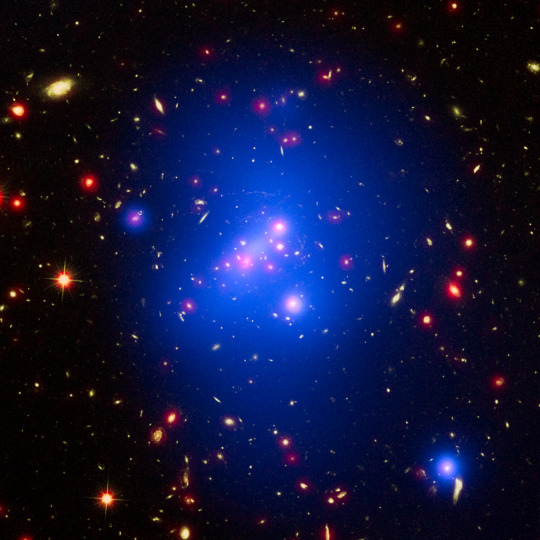
Astronomers used three of NASA's Great Observatories to capture this multiwavelength image showing galaxy cluster IDCS J1426.5+3508. It includes X-rays recorded by the Chandra X-ray Observatory in blue, visible light observed by the Hubble Space Telescope in green, and infrared light from the Spitzer Space Telescope in red. This rare galaxy cluster has important implications for understanding how these megastructures formed and evolved early in the universe.
How Astronomers Time Travel
Let’s add another item to your travel bucket list: the early universe! You don’t need the type of time machine you see in sci-fi movies, and you don’t have to worry about getting trapped in the past. You don’t even need to leave the comfort of your home! All you need is a powerful space-based telescope.
But let’s start small and work our way up to the farthest reaches of space. We’ll explain how it all works along the way.
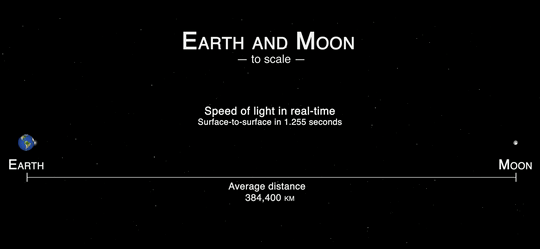
This animation illustrates how fast light travels between Earth and the Moon. The farther light has to travel, the more noticeable its speed limit becomes.
The speed of light is superfast, but it isn’t infinite. It travels at about 186,000 miles (300 million meters) per second. That means that it takes time for the light from any object to reach our eyes. The farther it is, the more time it takes.
You can see nearby things basically in real time because the light travel time isn’t long enough to make a difference. Even if an object is 100 miles (161 kilometers) away, it takes just 0.0005 seconds for light to travel that far. But on astronomical scales, the effects become noticeable.
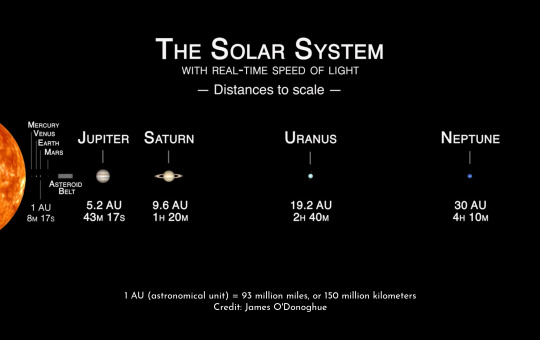
This infographic shows how long it takes light to travel to different planets in our solar system.
Within our solar system, light’s speed limit means it can take a while to communicate back and forth between spacecraft and ground stations on Earth. We see the Moon, Sun, and planets as they were slightly in the past, but it's not usually far enough back to be scientifically interesting.
As we peer farther out into our galaxy, we use light-years to talk about distances. Smaller units like miles or kilometers would be too overwhelming and we’d lose a sense of their meaning. One light-year – the distance light travels in a year – is nearly 6 trillion miles (9.5 trillion kilometers). And that’s just a tiny baby step into the cosmos.
youtube
The Sun’s closest neighboring star, Proxima Centauri, is 4.2 light-years away. That means we see it as it was about four years ago. Betelgeuse, a more distant (and more volatile) stellar neighbor, is around 700 light-years away. Because of light’s lag time, astronomers don’t know for sure whether this supergiant star is still there! It may have already blasted itself apart in a supernova explosion – but it probably has another 10,000 years or more to go.
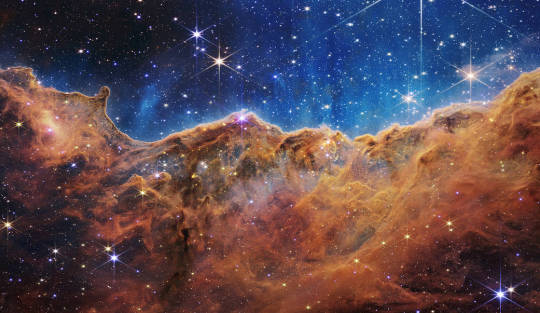
What looks much like craggy mountains on a moonlit evening is actually the edge of a nearby, young, star-forming region NGC 3324 in the Carina Nebula. Captured in infrared light by the Near-Infrared Camera (NIRCam) on NASA’s James Webb Space Telescope, this image reveals previously obscured areas of star birth.
The Carina Nebula clocks in at 7,500 light-years away, which means the light we receive from it today began its journey about 3,000 years before the pyramids of Giza in Egypt were built! Many new stars there have undoubtedly been born by now, but their light may not reach Earth for thousands of years.
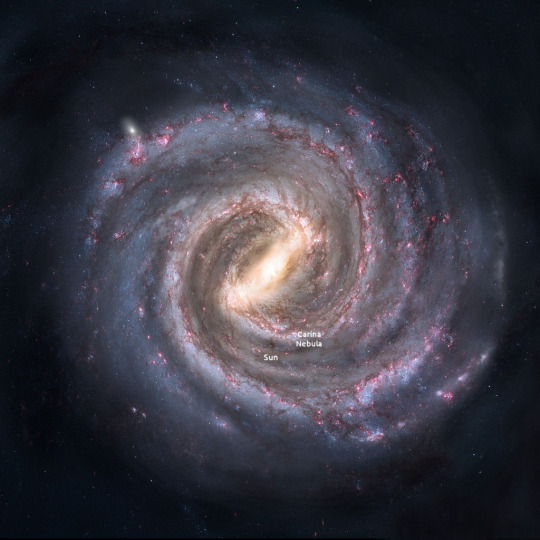
An artist’s concept of our Milky Way galaxy, with rough locations for the Sun and Carina nebula marked.
If we zoom way out, you can see that 7,500 light-years away is still pretty much within our neighborhood. Let’s look further back in time…
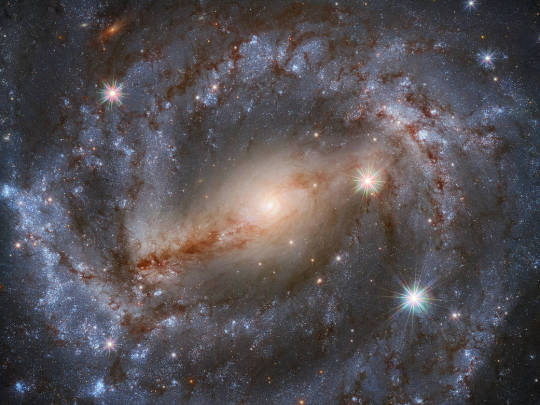
This stunning image by the NASA/ESA Hubble Space Telescope features the spiral galaxy NGC 5643. Looking this good isn’t easy; 30 different exposures, for a total of nine hours of observation time, together with Hubble’s high resolution and clarity, were needed to produce an image of such exquisite detail and beauty.
Peering outside our Milky Way galaxy transports us much further into the past. The Andromeda galaxy, our nearest large galactic neighbor, is about 2.5 million light-years away. And that’s still pretty close, as far as the universe goes. The image above shows the spiral galaxy NGC 5643, which is about 60 million light-years away! That means we see it as it was about 60 million years ago.
As telescopes look deeper into the universe, they capture snapshots in time from different cosmic eras. Astronomers can stitch those snapshots together to unravel things like galaxy evolution. The closest ones are more mature; we see them nearly as they truly are in the present day because their light doesn’t have to travel as far to reach us. We can’t rewind those galaxies (or our own), but we can get clues about how they likely developed. Looking at galaxies that are farther and farther away means seeing these star cities in ever earlier stages of development.
youtube
The farthest galaxies we can see are both old and young. They’re billions of years old now, and the light we receive from them is ancient since it took so long to traverse the cosmos. But since their light was emitted when the galaxies were young, it gives us a view of their infancy.

This animation is an artist’s concept of the big bang, with representations of the early universe and its expansion.
Comparing how fast objects at different distances are moving away opened up the biggest mystery in modern astronomy: cosmic acceleration. The universe was already expanding as a result of the big bang, but astronomers expected it to slow down over time. Instead, it’s speeding up!
The universe’s expansion makes it tricky to talk about the distances of the farthest objects. We often use lookback time, which is the amount of time it took for an object’s light to reach us. That’s simpler than using a literal distance, because an object that was 10 billion light-years away when it emitted the light we received from it would actually be more than 16 billion light-years away right now, due to the expansion of space. We can even see objects that are presently over 30 billion light-years from Earth, even though the universe is only about 14 billion years old.

This James Webb Space Telescope image shines with the light from galaxies that are more than 13.4 billion years old, dating back to less than 400 million years after the big bang.
Our James Webb Space Telescope has helped us time travel back more than 13.4 billion years, to when the universe was less than 400 million years old. When our Nancy Grace Roman Space Telescope launches in a few years, astronomers will pair its vast view of space with Webb’s zooming capabilities to study the early universe in better ways than ever before. And don’t worry – these telescopes will make plenty of pit stops along the way at other exciting cosmic destinations across space and time.
Learn more about the exciting science Roman will investigate on X and Facebook.
Make sure to follow us on Tumblr for your regular dose of space!
3K notes
·
View notes
Text

Lohtu💧
A colored ink on watercolor paper painting for my solo exhibition in the fall of 2023. I wanted to depict a variety of emotions and feelings in the pieces I made for this show. Lohtu is Finnish and means ‘solace’.
10K notes
·
View notes
Text
Rights
So confronted with the concept of non-human persons, one is then confronted with the concept of non-social persons. That is, persons who are not or cannot be members of society. Cetaceans and elephants are two explicit examples of types of persons I list. This leads to the classification of types of rights in a more hierarchical sense.
This hierarchy is not fully explicit, but there are three basic types: Natural, Social, and Civic. Natural Rights include life, liberty, justice, and expression. Social Rights include expression, knowledge, property, and participation in the political process except for voting and holding public office, which are Civic Rights.
It's obviously not a perfect system. It's a work in progress. The challenge is to accommodate legal equality for various animals who lack equal capacities for membership in society. While great apes could theoretically be integrated into human society, that is a relatively easy task compared to accommodating for the rights of elephants.
Furthermore are questions of AI. There are two specific species of AI, Artificium perspicax (anthromorph - chimp-like) and Artificium sagax (artifice - human-like) explicitly recognized as having Social Rights, their capacity for Civic Rights is not yet addressed. There are furthermore two genera of the family Machinida: Machina and Modus, which are listed under the Right of Recognition. Recognized Persons are those with Natural Rights but lacking the capacity for Social Rights.
In essence, society in Starfarer is to an extent stratified along taxonomical lines to a greater extent than our reality. In our world, you either are or aren't a person. But my vision is terrible so in my world all the lines are blurred. (Please laugh.)
0 notes
Text
Hello There (Rambling)
I've been gone a while. Not just from Tumblr. So hi!!!
I've been fiending for somewhere to share my thoughts now that Twitter has left the chat. I'm also on Threads and Post News (ehh I don't like the points system, I get it but I won't participate). I spend the most time on Instagram now.
I use Reddit a decent amount but entirely for business. I sell and work on fountain pens. Other than that I'm also technically a student but honestly pretty crappy at it. So we'll see how that goes...
Those are all distractions! Not really, lol, but sort of! I am working on my tabula magna, my Great Document: The Constitution of the United Republics of Spacia Centralia. I have a couple of other constitutional documents that are nearly complete, and a couple that are early drafts; different ideas and concepts. Unfortunately development of Nova Langa is on the back burner. It's being used in the two early draft documents though, so it's not completely stalled.
These are all fictional interstellar governments in my science fiction universe, working under the name Starfarer. There are also documents describing these governments in simple terms, as well as discussing statutory laws and their various types of uniformed services (not just military) and relationships with each other. I do have individual characters, but the primary subjects of my writing are governments not people.
I suppose from a point of view, I'm writing not one, but several propositional manifestos. From another, I'm creating an excessively intricate astrapolitical world without real characters or a point. From yet another, I'm using entire peoples and governments as characters in a story where the timeline is measured in years and decades rather than days and weeks.
The truth is that I'm a highly politically inclined individual who happens to be obsessive compulsive and on anxiety meds that tend to make me produce rambling essays like this. So I try to focus that energy into Starfarer.
The thing about Starfarer that keeps me so fervently attached to it rather than exploring new concepts for other universes, is that it is my life's work. I began work in the early 2000s, meaning I've put two decades into this, it's a bit hard to change course now.
You might be like "Where the aliens at, bro?" Well, they're coming... Soon™. I'm working out concepts to try to make these new species interesting. In the meantime you can enjoy the fact that Starfarer begins with the uplifting and mass naturalization of the other species of great apes: bonobos, chimpanzees, gorillas, and orangutans. This has severe implications. Two decades-long Interstellar Wars are fought, in part over this issue.
Aight I'm running out of steam here.
This has been your friendly neighborhood hermit, Oiralire.
Peace out.
3 notes
·
View notes
Text
What la Republica Quarta Sedes es.
http://dlvr.it/SrlB16
3 notes
·
View notes
Text
1 note
·
View note
Text
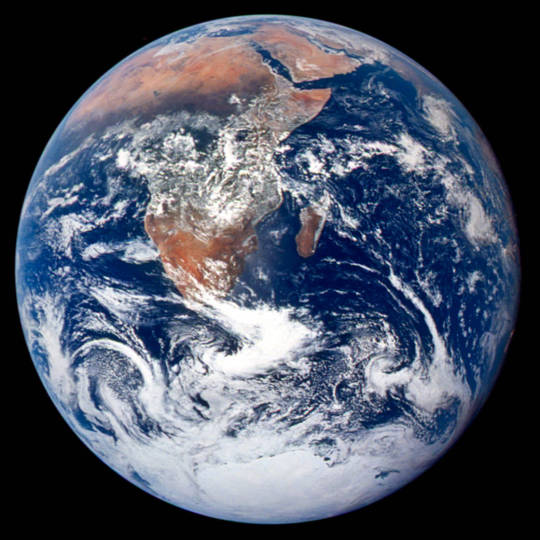
Ways NASA Studies the Ocean
We live on a water planet. The ocean covers a huge part of the Earth's surface – earning it the name Blue Marble.
The ocean is one of Earth’s largest ecosystems and helps moderate Earth’s climate. NASA scientists spend a lot of time studying the ocean and how it is changing as Earth’s climate changes.
In the last few years, NASA has launched an array of missions dedicated to studying this precious part of our planet, with more to come. For World Oceans Month, which starts in June, here are new ways NASA studies the ocean.
youtube
1. Seeing the colors of the ocean 🎨
A new NASA mission called PACE will see Earth’s oceans in more color than ever before. The color of the ocean is determined by the interaction of sunlight with substances or particles present in seawater.
Scheduled to launch in 2024, PACE will help scientists assess ocean health by measuring the distribution of phytoplankton, tiny plants and algae that sustain the marine food web. PACE will also continue measuring key atmospheric variables associated with air quality and Earth's climate.
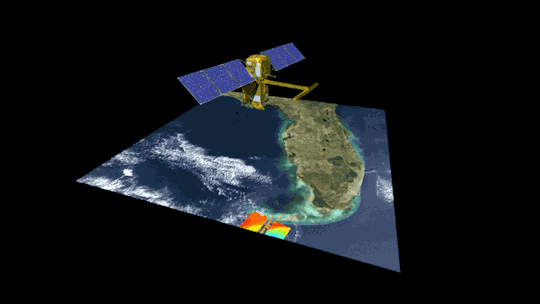
2. Surveying surface water around the globe 💧
The SWOT satellite, launched in late 2022, is studying Earth’s freshwater – from oceans and coasts to rivers, lakes and more – to create the first global survey of Earth’s surface water.
SWOT is able to measure the elevation of water, observing how major bodies of water are changing and detecting ocean features. The data SWOT collects will help scientists assess water resources, track regional sea level changes, monitor changing coastlines, and observe small ocean currents and eddies.
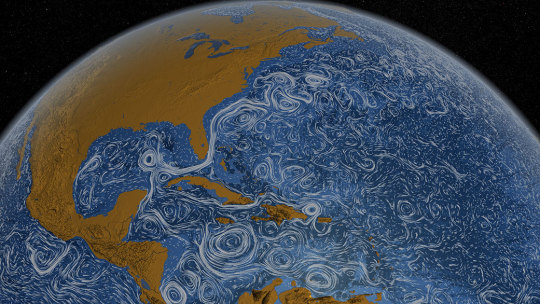
3. Setting sail to understand interactions between the ocean and atmosphere 🚢
With research aircraft, a research ship, and autonomous ocean instruments like gliders, NASA’s S-MODE mission is setting sail to study Earth’s oceans up close. Their goal? To understand ocean whirlpools, eddies and currents.
These swirling ocean features drive the give-and-take of nutrients and energy between the ocean and atmosphere and, ultimately, help shape Earth’s climate.
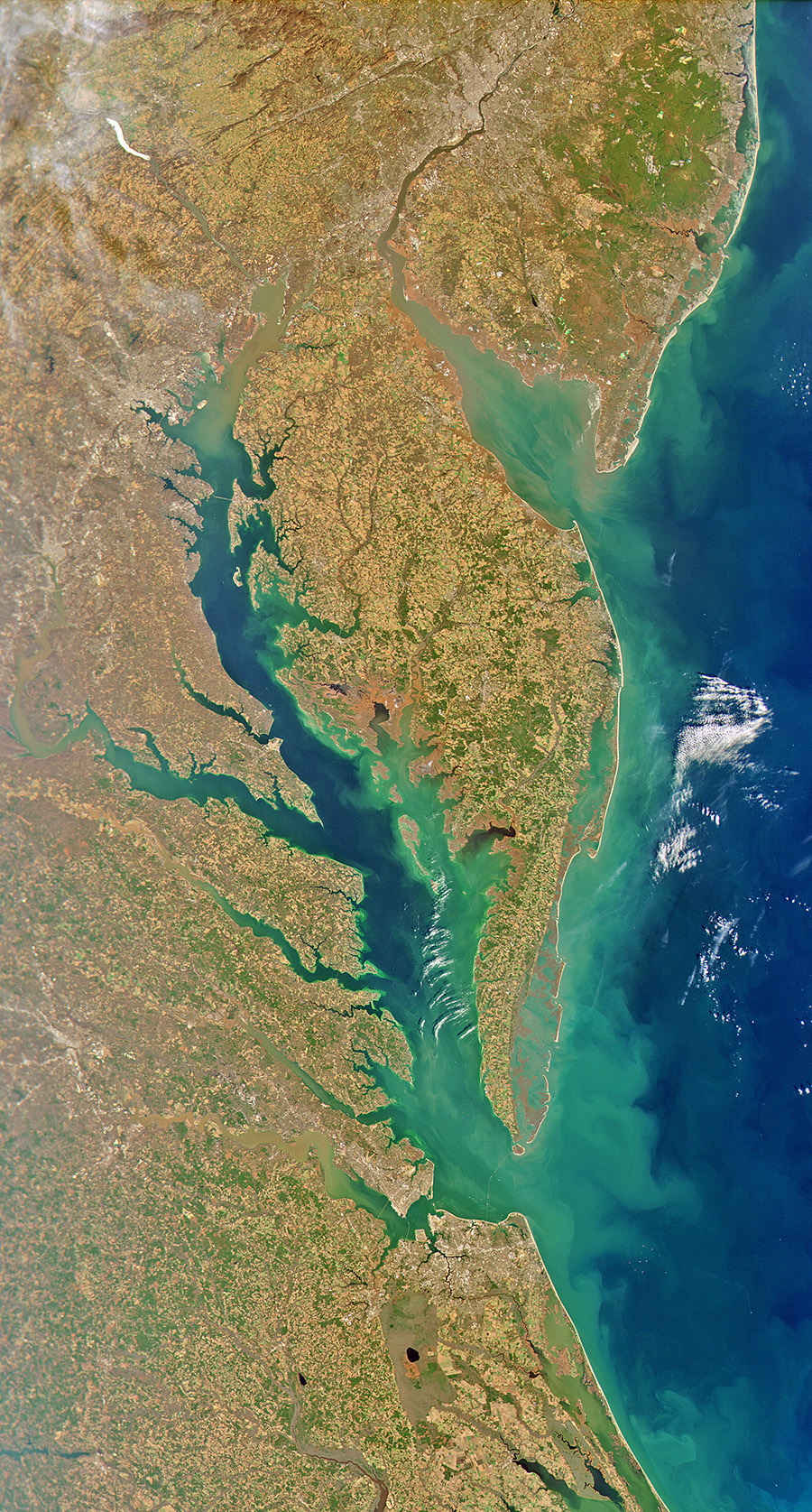
4. Building ocean satellites the size of a shoebox 📦
NASA’s HawkEye instrument collects ocean color data and captures gorgeous images of Earth from its orbit just over 355 miles (575 kilometers) above Earth’s surface. It’s also aboard a tiny satellite measuring just 10cm x 10 cm x 30 cm – about the size of a shoebox!

5. Designing new missions to study Earth’s oceans! 🌊
NASA is currently designing a new space-based instrument called GLIMR that will help scientists observe and monitor oceans throughout the Gulf of Mexico, the southeastern U.S. coastline and the Amazon River plume that stretches to the Atlantic Ocean. GLIMR will also provide important information about oil spills, harmful algae blooms, water quality and more to local agencies.
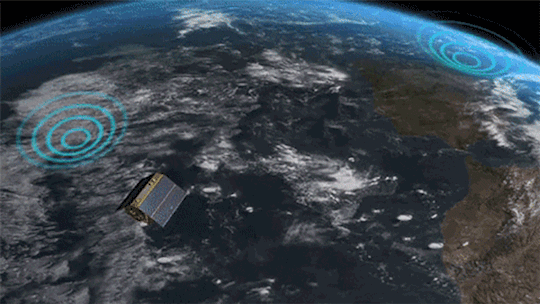
6. Taking the ocean to new heights ⬆️
The U.S.-European Sentinel-6 Michael Freilich satellite is helping researchers measure the height of the ocean - a key component in understanding how Earth’s climate is changing.
This mission, which launched in 2020, has a serious job to do. It’s not only helping meteorologists improve their weather forecasts, but it’s helping researchers understand how climate change is changing Earth’s coastlines in real time.
Make sure to follow us on Tumblr for your regular dose of space!
2K notes
·
View notes
Text
Nova Langa Begins
Disclaimer: I am not a linguist I’m just a crazy person.
This is a very rough draft of a translation of this paragraph:
We hold these truths to be self-evident: that all individuals are endowed by their Creator with the inalienable Natural Rights to Life, Liberty, Expression, and Justice. It is for the purposes of securing life, ensuring liberty, protecting free expression, and distributing equal justice that persons have created Governments.
Into this paragraph:
We hold these truth esse self-evidas: that omnas populas are endowed by their Creator cum inalienable Natural Rights a Vita, Liberta, Expression, et Justica. Il est for the purposas of securas vita, ensuras liberta, protecta free expression, et distributas equa justica that populas have created Governas.
The latter paragraph is written in Nova Langa (”New Language”) which is being developed as part of a larger science fiction project. This is simply one piece of world-building. You see, I’m writing one of the Constitutions in Nova Langa. That’s right. One OF them. There is one that is in a late-stage of drafting and another that is a second draft or so.
I don’t want to assume anyone will read this or care but if anyone is interested in learning more I’ll be posting more bits and pieces.
0 notes
Text
Rockets, Racecars, and the Physics of Going Fast
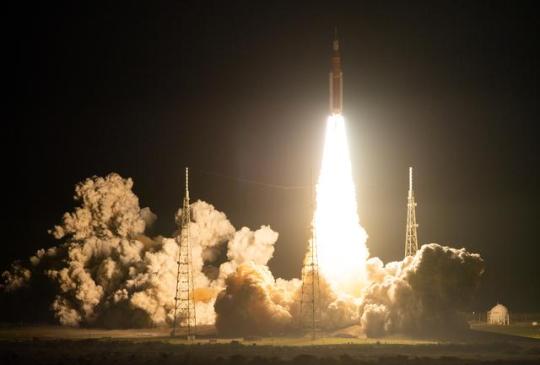
When our Space Launch System (SLS) rocket launches the Artemis missions to the Moon, it can have a top speed of more than six miles per second. Rockets and racecars are designed with speed in mind to accomplish their missions—but there’s more to speed than just engines and fuel. Learn more about the physics of going fast:

Take a look under the hood, so to speak, of our SLS mega Moon rocket and you’ll find that each of its four RS-25 engines have high-pressure turbopumps that generate a combined 94,400 horsepower per engine. All that horsepower creates more than 2 million pounds of thrust to help launch our four Artemis astronauts inside the Orion spacecraft beyond Earth orbit and onward to the Moon. How does that horsepower compare to a racecar? World champion racecars can generate more than 1,000 horsepower as they speed around the track.

As these vehicles start their engines, a series of special machinery is moving and grooving inside those engines. Turbo engines in racecars work at up to 15,000 rotations per minute, aka rpm. The turbopumps on the RS-25 engines rotate at a staggering 37,000 rpm. SLS’s RS-25 engines will burn for approximately eight minutes, while racecar engines generally run for 1 ½-3 hours during a race.

To use that power effectively, both rockets and racecars are designed to slice through the air as efficiently as possible.
While rockets want to eliminate as much drag as possible, racecars carefully use the air they’re slicing through to keep them pinned to the track and speed around corners faster. This phenomenon is called downforce.
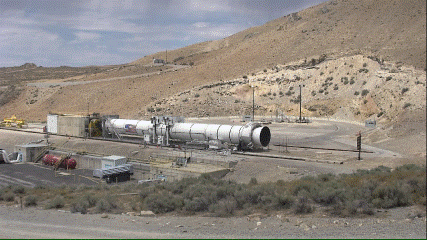
Steering these mighty machines is a delicate process that involves complex mechanics.
Most racecars use a rack-and-pinion system to convert the turn of a steering wheel to precisely point the front tires in the right direction. While SLS doesn’t have a steering wheel, its powerful engines and solid rocket boosters do have nozzles that gimbal, or move, to better direct the force of the thrust during launch and flight.

Racecar drivers and astronauts are laser focused, keeping their sights set on the destination. Pit crews and launch control teams both analyze data from numerous sensors and computers to guide them to the finish line. In the case of our mighty SLS rocket, its 212-foot-tall core stage has nearly 1,000 sensors to help fly, track, and guide the rocket on the right trajectory and at the right speed. That same data is relayed to launch teams on the ground in real time. Like SLS, world-champion racecars use hundreds of sensors to help drivers and teams manage the race and perform at peak levels.

Knowing how to best use, manage, and battle the physics of going fast, is critical in that final lap. You can learn more about rockets and racecars here.
Make sure to follow us on Tumblr for your regular dose of space!
1K notes
·
View notes
Text
Celebrate Earth Day with NASA
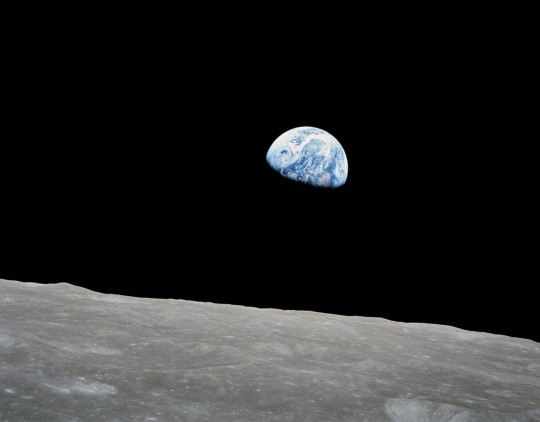
"We came all this way to explore the Moon, and the most important thing is that we discovered the Earth." - Apollo 8 astronaut Bill Anders
On Dec. 24, 1968, Anders snapped this iconic photo of "Earthrise" during the historic Apollo 8 mission. As he and fellow astronauts Frank Borman and Jim Lovell became the first humans to orbit the Moon, they witnessed Earth rising over the Moon's horizon. The image helped spark the first #EarthDay on April 22, 1970.
Anders sat down with Dr. Kate Calvin, our chief scientist and senior climate advisor, to chat about the photo, and NASA’s role in studying our home.
youtube
Make sure to follow us on Tumblr for your regular dose of space!
3K notes
·
View notes
Text
I’m back
It’s true... I was going to use Blogger but then I was like Tumblr is cooler so I’m back here. Hi.
There’s so much I could talk about. I guess I will..? For now let’s leave it at meds are good, life is shit, I’m handling it remarkably well.
I have apple juice and a mango sparkling water. That’s right. Two drinks. Fancy pants over here with mango sparkling water. What am I, middle class!?
Anyway I guess I’m gonna start like talking about shit and stuff again. I journal a lot. Like... constantly. So I’ve got a lot to say. Might as well scream it into a void in case someone listens... eh?
0 notes
Text
I've been selling things
Hey everyone! Been a couple of weeks so I wanted to say hi.
Let's start with some good music, our friend VolcaNiced recently dropped this:
youtube
I'm waiting for him to use a Korg microKey for a true Micro jam. Lol.
Anyway what I've been up to is trying to sell things... Some music gear and pens I don't use enough. The Super5, ball pens and notebooks, and Sheaffers are all still available; as is all of the music gear, which I need to post to Reverb. I set up a quick shop yesterday, which doesn't have anything yet but there is a link in the sidebar!
Anyway that's about all I've done as far as being productive. I did buy a Volca Sample 1 to use Vosyr and Pajen, which are both effen awesome. I was going to sell my Volca Drum but then I found out about the step probability parameter... so yeah I was happy about learning that.
I was also thinking of selling my NTS-1s, but I kinda wanna just save for the SineVibes Korg Collection. It's expensive but also if I sold both after getting it I could probably make a profit, but also I just love those little things, they're wonderful. I love setting arp to random, because it just keeps going, and just poking at it, it's fun when I don't have enough motivation for something serious.
I haven't done any writing at all, really... makes me sad, but...
youtube
That's all for today, thanks for reading! Stay safe out there everyone :) source https://oiralire.blogspot.com/2021/10/ive-been-selling-things.html
1 note
·
View note